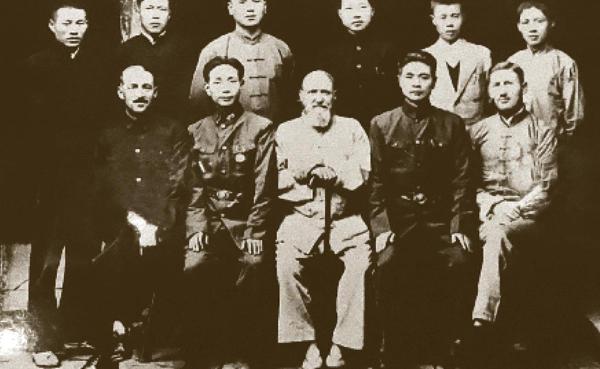跟时间赛跑,抢救“里斯本丸”的珍贵历史
2018-10-11陈静
陈静
今年夏日,有一位中国人自掏200多万元,在英国三大报纸《泰晤士报》《每日电讯报》和《卫报》上刊登“寻人启事”,寻找1942年“里斯本丸”沉船事件中的英军战俘和他们的后人,他计划把这段快被人遗忘的历史拍摄成纪录片《The 828 Unforgotten》,预计在明年10月26日上映。
他叫方励。
他对“里斯本丸”念念不忘
方励,电影《后会无期》的制片人,我们熟悉或者不熟悉的电影《乘风破浪》《万物生长》《二次曝光》《观音山》等也由他打造。
2013年,方励来舟山东极勘景时,船老大指着一片海域告诉方励关于“里斯本丸”的故事。
“里斯本丸”是二战期间日本从巴西征用的一艘客货船,载重7152吨。“里斯本丸”的第一个任务是从香港往日本运送战俘,搭载了1816名英军战俘、侨民,以及778名日本士兵和平民。当时日军只顾自己撤离,把英国战俘关在底舱。
1942年10月1日早晨,没有悬挂任何战俘标志的“里斯本丸”航行至舟山东部海域时,被美军潜艇“鲈鱼”号发射的鱼雷击中船尾。
资料显示,“里斯本丸”从中弹到沉船历时一天,800多名英国士兵遇难。舟山渔民先后出动小渔船46艘65次,共救起384名左右英俘,其中绝大多数又被日军抓走,在“里斯本丸”底舱的战俘们,因为阶梯断掉,被生生困在船底,沉入海底。
听到这个真实故事后,方励久久不能平静。后来,他在舟山海域进行了两次海洋探测,一直到去年。方励的行动得到了英国媒体的关注,一位英国记者被这个故事吸引,并进行了报道。很快,他就收到一封来自英国的Amanda女士的邮件。Amanda说,她爷爷MontagueGlister就死在那艘船上。
方励随即与Amanda取得了联系。方励和导演范铭在伦敦与Amanda会见后,被她对爷爷的怀念感动,决定将这个故事重现于世人面前。
据方励介绍,“里斯本丸”事件的当事人所剩无几,目前已经找到99岁的幸存者Dennis Morley和曾经参加营救的94岁中国渔民林阿根。
为了方便照顾林阿根,老人的子女几年前把他接到了普陀沈家门家中居住。据老人的儿媳妇介绍,老人家虽然已是94岁高龄,但依旧耳聪目明,身体也比较硬朗,除了儿媳妇送来的一日三餐以外,每天还要饮用4斤至5斤舟山老酒,“舟山老酒我们都是整箱整箱给他买的,一天起码喝4顿。他自己把酒温热了,慢悠悠地喝。”
方励深感自己必须有所作为,为他们拍一部纪录片,讲述“里斯本丸”上英国战俘的故事。
幸存者回忆76年前的那一天
从今年4月踏上英國土地开始,方励就在微博上详细记录了他的工作过程。
1942年9月27日,日军将关押在香港深水埗集中营的1800多名英军战俘转运到“里斯本丸”上,绝大部分战俘被关押在3个狭窄闷热的货舱里,只有少数伤病人员留在甲板上。这艘船上装载的战俘,相当于驻港英军的十分之一。“里斯本丸”离开香港向东前行。它先后经过台湾北端的东岛灯塔、宁波象山县的北渔山岛灯塔。船上的战俘身体瘦弱、疾病缠身。
根据幸存者们的回忆,每个货舱大约关押了600人。靠近船头的一号舱关押着皇家海军的战俘,船头前方的二号舱中是皇家苏格兰军团、米德尔赛克斯军团、皇家工程兵、皇家信号兵团、皇家医疗队的战俘,船尾的三号舱里是皇家炮兵团的战俘。拥挤不堪的船舱里,没有空间,没有光线,也不知道时间,汗水、体味、呕吐物和排泄物令人透不过气来。
纪录片《The 828Unforgotten》摄制组来到伦敦西部的小镇查尔福德,拜访二战沉船“里斯本丸”事件中在世的幸存者Dennis Morley(当时所知道的唯一一位)。
今年99岁的Dennis Morley曾是皇家苏格兰军团的一员,在“里斯本丸”上被日军关进二号船舱。
活了近一个世纪,Dennis仍精神矍铄,和摄制组见面时坚持站着聊天,脊背仍像一个战士那样挺得笔直,“我是一个乐观的人。”他说,“这一生中从来没有什么事能让我担心。”
摄制组跟着Dennis的思绪回到“里斯本丸”被击沉的那一天。那已经是76年前的事了,Dennis闭着眼睛沉思了好一会,才缓缓向摄制组描绘出当时的画面:
鱼雷击中船体时,巨大的声响从船底传来,灯灭了,他们都还不知道发生了什么,船舱一片死寂;接着又有几枚鱼雷袭来,船体开始倾斜,那一刻他能回想起来的,除了恐慌、恐慌,还是恐慌。
很快,日军开始用帆布和木板钉死舱口,他们撤离了,只留下十几个士兵看守战俘。“这帮混蛋,他们要把我们淹死!”意识到危机的Dennis和战友们开始想方设法逃离船舱,他们找出一把刀,从木板缝里戳出去割破帆布,用蛮力将钉死的舱口捅开。
第一批逃出的战友被守在舱口的日本士兵开枪打死,Dennis在舱底都能听到“突突”的枪声,“就好像火车从头上开过一样。”
但很快,逃出去的人越来越多,看守的日本士兵被他们消灭,逃生通道上的障碍被清理干净了。
Dennis是最后几个逃出去的人之一,他清楚地记得,当人们乱作一团、惊恐地争抢逃生机会的时候,正是前几天采访中给摄制组留下深刻印象的Norman Cuthbertson上尉安慰大家,控制了局面。“他是个英雄,真正的英雄。”Dennis一提起Cuthbertson上尉,声音就抬高八度。
逃出船舱的Dennis在已经倾斜成45度的甲板上静静等待,此时日本人还在对跳进海里的战俘扫射。他一直等到船沉前的最后一刻才跳入水中,躺在水面上静静等待日出。
有一些中国渔民划着小船来救人,而Dennis则是被一艘日本海军船捞起的。“日本人应该是害怕中国渔民把他们的罪行告诉全世界,所以才开始救人的。”不过,这些对于今天的Dennis来说都已经不重要了。
方励和Dennis Morley有个约定:“明年10月26日他百岁生日时,我们将把这个纪录片作为生日礼物呈献给他……”
据其他幸存者回忆,最绝望的是三号舱的战俘,三号舱所在的船尾最先被鱼雷击中,漏水情况也最为严重,战俘们拼命轮流泵水一整夜,筋疲力尽,在逃生的关键时刻,通往甲板的梯子突然断裂。他们中的很多人,是唱着一首思乡的歌曲沉入海底的。
10月2日上午10点半左右,“里斯本丸”船头向上喷出巨大的水花,沉入海底。
我们所能做的都是抢救性采访
遇难者家属的每一次回忆,都让方励感到心碎。
83岁高龄的Ron Brooks是遇难者家属之一,他的父亲当年是英国皇家炮兵团香港赤柱炮台的主炮手,1942年10月2日随“里斯本丸”沉入海底。遇难时,Ron的父亲在香港被俘期间写下的最后一封家书仍在邮寄途中。年迈的Ron回忆起父亲的离去,泪水涌出,哽咽得说不出话来。
与幸存者家属Ken Penny和Simon Penny见面时,两兄弟拿出那张他们父亲Gerald Penny去世前长期放在自己随身钱包里的小纸条,纸条是他们当时22岁的大伯Richard Penny在被送上“里斯本丸”前夕,在香港深水埗战俘营里写给他们父亲的最后一封信。信中Richard Penny托付自己年仅5岁的小弟,希望他长大后能照顾母亲,撑起这个家庭。这封短短十幾个字、全部由大写字母写成的信,饱含遗憾、不舍和期许,让方励泪流不止。
方励形容,此次采访和拍摄让他如同经历一场战争一般,有太多令人心碎、震撼、感动的瞬间。十余天的旅程,不仅获得了大量素材,更难忘的是他们所有人经历了无数的情感冲击,体念到了战争带给人类的切肤之痛……他认为,“里斯本丸”的故事必须被讲出来,这不但是他的心愿,也是他给逝去的828个年轻生命的承诺。
7月10日,“里斯本丸”纪录片小组在伦敦接受了三拨采访:BBC电台Radio 4、《欧洲时报》、BBC电视台WorldNews……
据了解,经过《泰晤士报》对方励的采访,以及其他英国媒体的跟进,再加上方励在英国主流大报上的广告,已经有100多位“里斯本丸”英军战俘家属联系了他们。战俘后人的信息几乎每天都在更新,现在团队手里已经有200多个战俘后人家庭的线索。
最令人激动的是又有一位英军战俘联系上了他们,他现居温哥华。方励准备尽快去拜访这位现年98岁的 William Ben-ingfield。
方励说,“我们每天都在跟时间赛跑,所能做的都是抢救性采访”。
Fang Li, the producer of the 2014 Han Han film and several other films, has paid more than two million yuan out of his pocket just to tell an untold tale. A documentary he is working on and titled , devoted to a lesser-known chapter of the World War II, is scheduled to be released on October 26, 2019.
The inspiration of the documentary came from Fang Lis visit to Dongji island in Zhoushan, Chinas largest archipelago and part of Zhejiang province, in 2013. A local fisherman took him to the waterfront and shared with him the forgotten tales sinking into the seabed together with the legendary cargo liner on the morning of October 1, 1942.
Lisbon Maru was a Japanese Cargo liner built at Yokohama in 1920 for a Japanese shipping line. The ship was 445 feet (135.6 meters) long, and measured 7,053 GRT and 4,308 NRT. During World War II the ship became an armed troopship. On her final voyage she was also transporting 1,816 British and Canadian prisoners-of-war captured after the fall of Hong Kong in December 1941 and 778 Japanese Army personnel between Hong Kong and Japan when torpedoed on 1 October 1942, sinking with a loss of over 800 lives. The POWs were held in “appalling conditions ... [those] at the bottom of the hold ... showered by the diarrhea of sick soldiers above”.
On 1 October 1942 the ship that was not marked to alert Allied forces to the nature of its passengers was torpedoed by USS Grouper (SS-214) when it reached the waters in eastern Zhoushan. The Japanese troops were evacuated from the ship but the POWs were not. Reportedly 384 British POWs were first rescued by fishermen in Zhoushan, but later fell back into the talons of the Japanese troops.
The story left Fang Li sad and unsettled for a prolonged period of time. He revisited Dongji twice, trying to find more about Lisbon Maru. What the film producer did caught the attention of the British media and led to a news story written by a British reporter and published in the UK.
The turning point of Fang Lis query came from an email sent by Amanda, who shared with Fang Li that her grandpa died on that day and in that ship. The result was a meeting between Fang Li (and the director of the documentary) and Amanda in London. According to Fang, most of the survivors and witnesses of the wartime tragedy are gone. For 94-year-old Lin Agen, now living with his children in Shenjiamen in Zhoushan, the day when he and his fellows risked their life to save the POWs from the sinking ship felt it was just yesterday.
Dennis Morley, a former member of the Royal Air Force, is one of the survivors. The 99-year-old, still hale and hearty and calling himself “an incurable optimist”, recalled the tragic day 76 years ago with his eyes closed:
“We were hit by more than one torpedo. Deafening sounds came from the hull bottom. Everyone panicked in the dark. The hatches were battened down above them and we were left on the listing ship. After 24 hours it became apparent that the ship was sinking and we were able to break through the hatch covers. Some were able to escape from the ship before it sank. The ladder from one of the holds to the deck failed, and the Royal Artillery POWs in the hold could not escape. Japanese guards first fired on the POWs who reached the deck; and other Japanese ships used machine guns to fire at those who were in the water…”
“I waited and waited, till the Japanese stopped firing at those who were in the water, and jumped into the water at the last moment. I floated a long way, waiting for the first rays of the sun to emerge from the horizon,” Dennis reminisced, lost in thoughts.
“Many Chinese fishing boats joined the rescue effort, but I was saved by the Japanese Navy, who I assume did this just because of the fear that their atrocity would be condemned by the world someday.”
One of the interviewees the documentary team tracked down on is Lieutenant Norman Cuthbertson, one of the survivors. “He pacified the panicking crowd and got the chaos under control. He is a real hero,” Dennis proudly announced, raising his voice.
The POWs in the No.3 cabin were last heard singing “Its a Long Way to Tipperary”. Later, however, after some Chinese fishermen started rescuing survivors, the Japanese ships also rescued survivors.
For Fang Li, the interviews and the shooting of the documentary were a stirring experience of heartbreaking stories about life and death. “Its a race against time. It is another rescue,” Fang Li said. With mounting media exposure about the making of the documentary in the UK, the documentary team has built connection with more than 100 bereaved families of former prisoners and escapees, one of which is William Beningfield, aged 98 and living in Vancouver. Fang plans to go see him as soon as possible.
